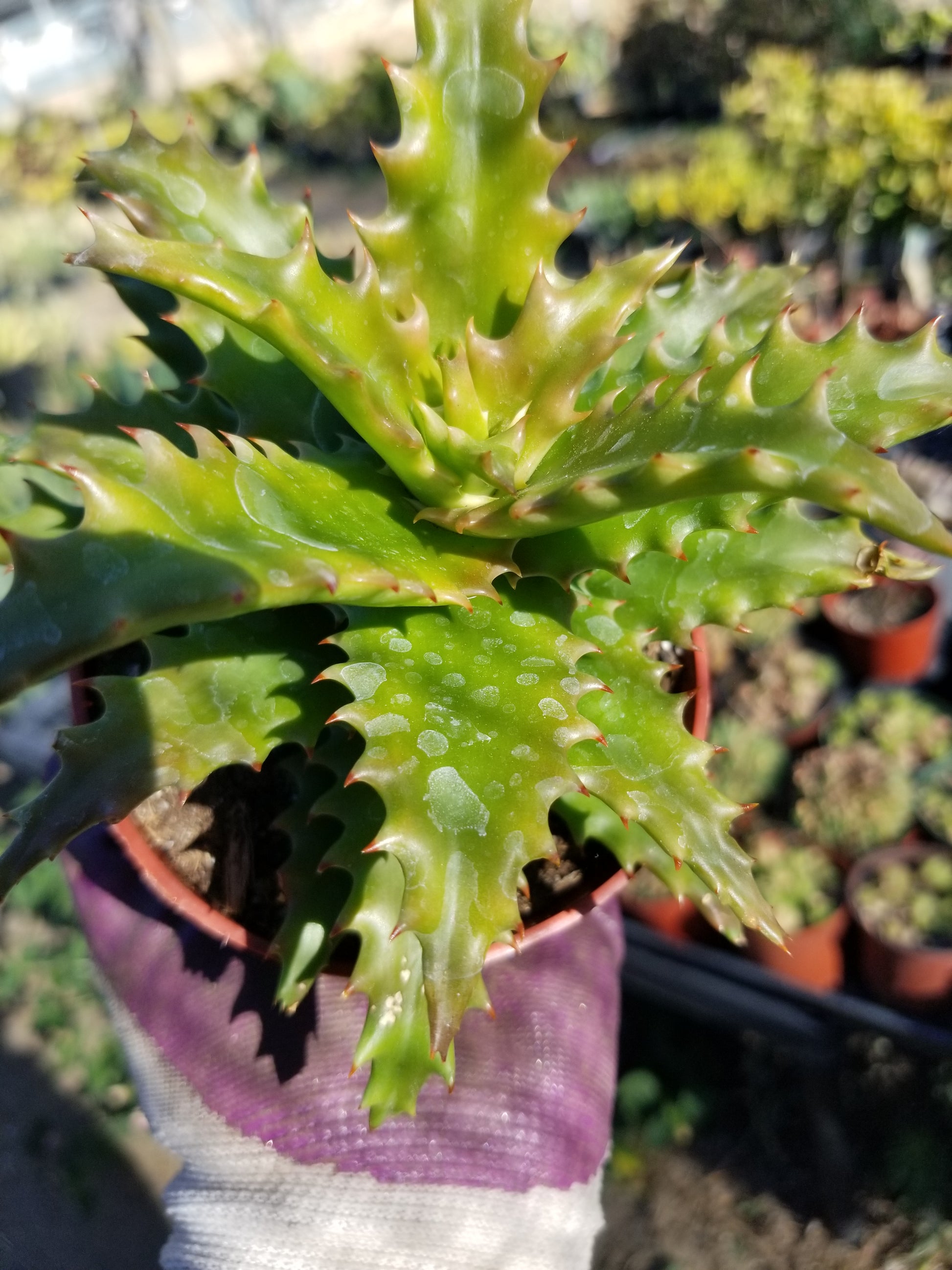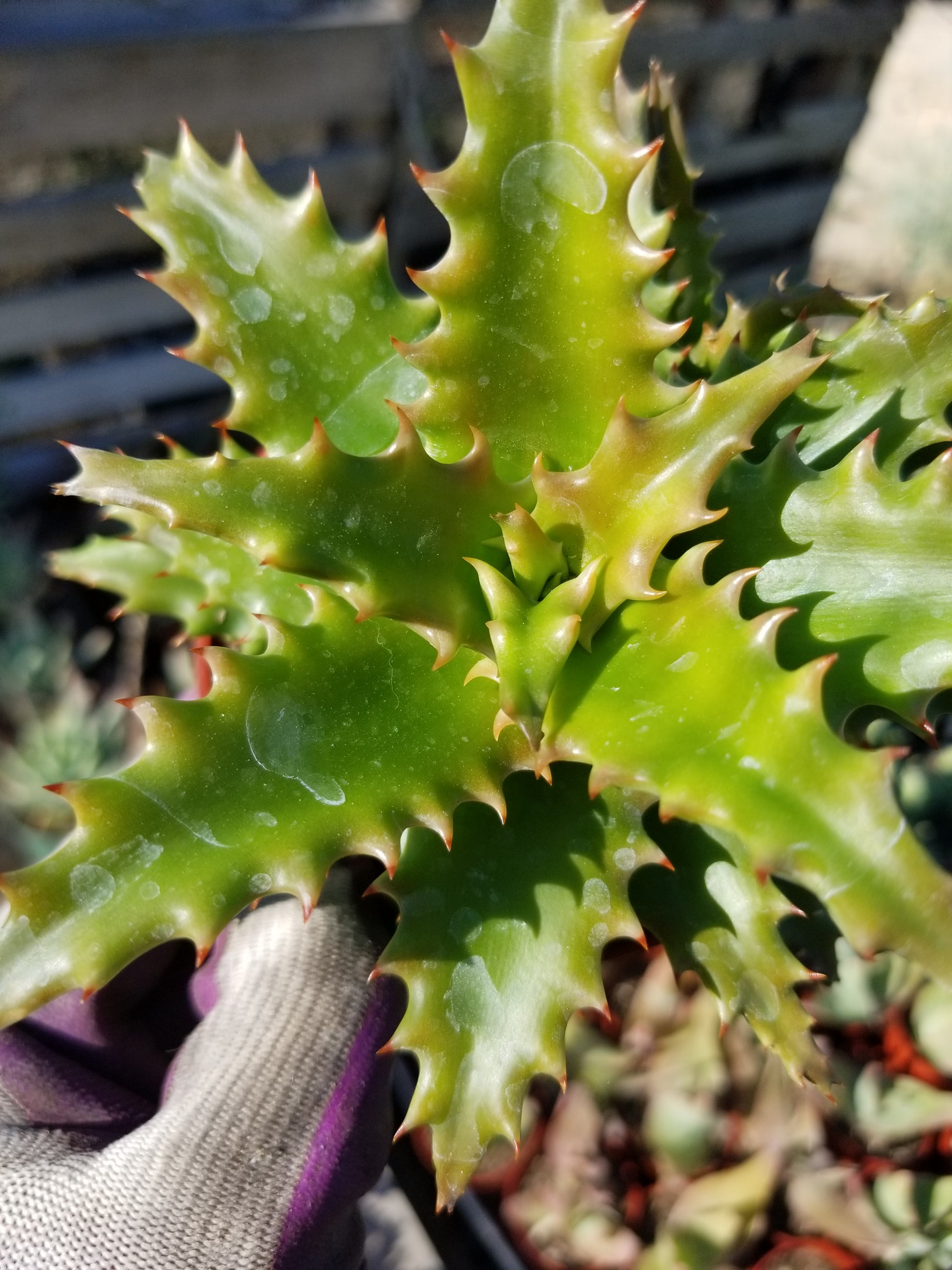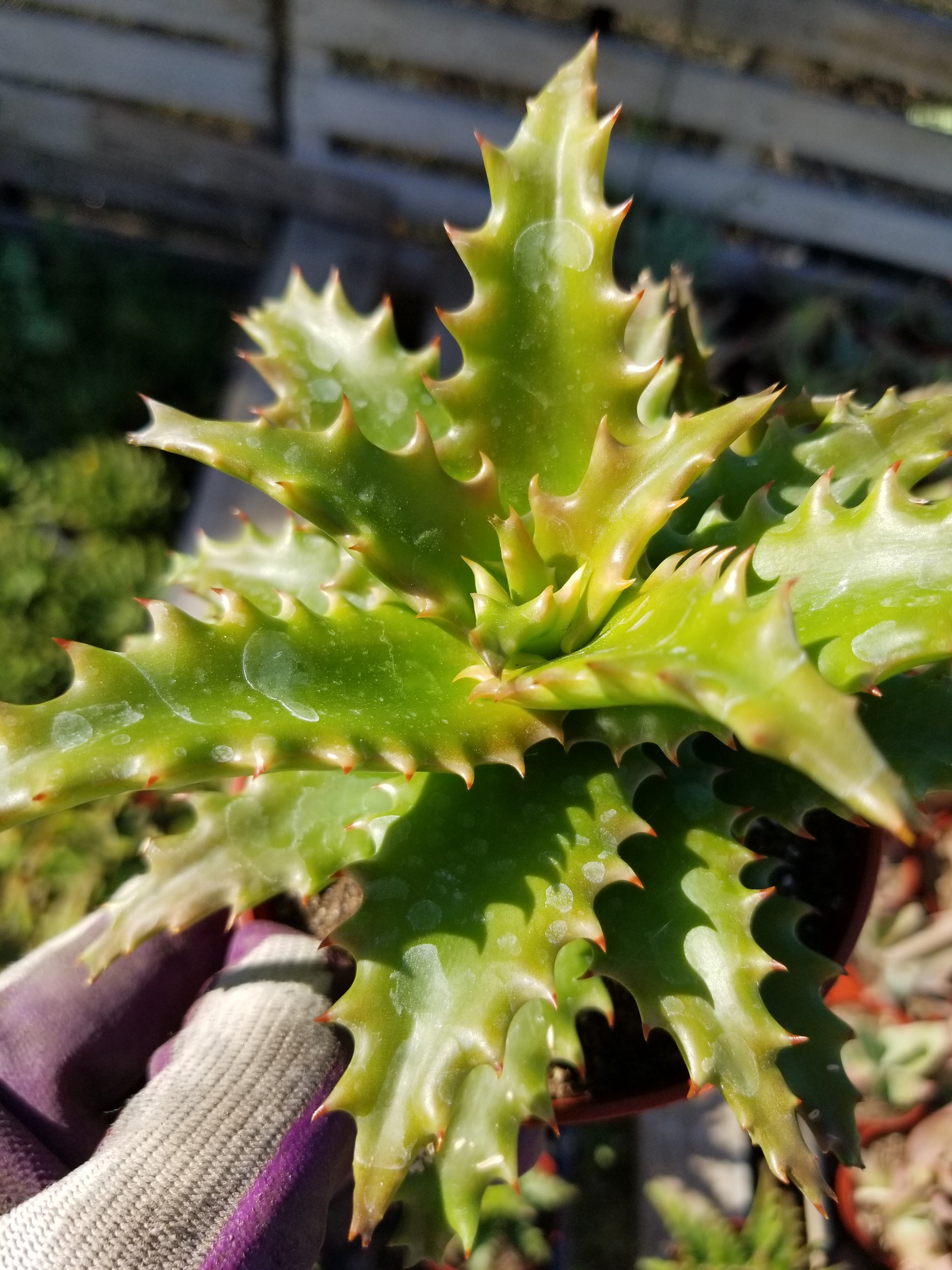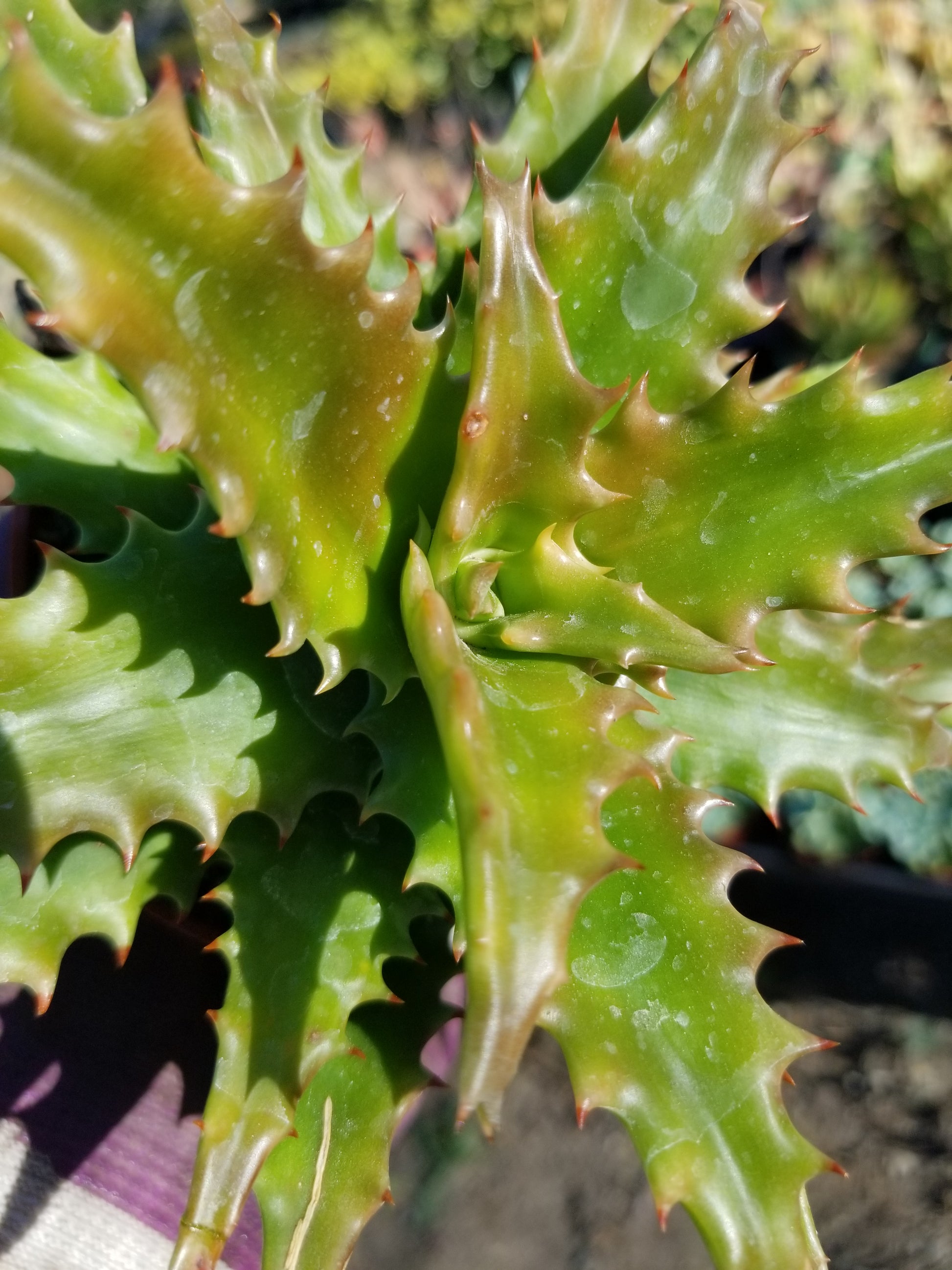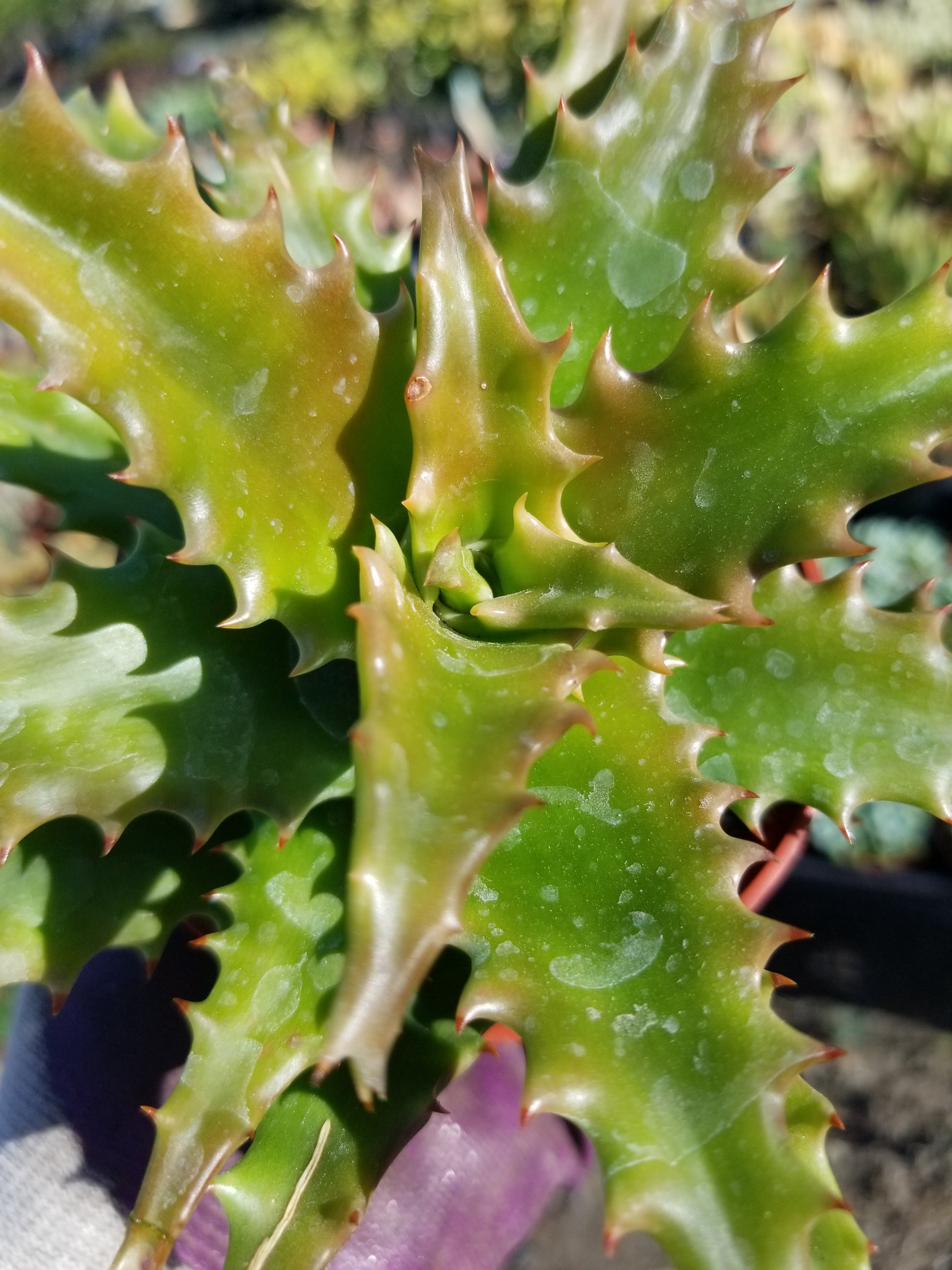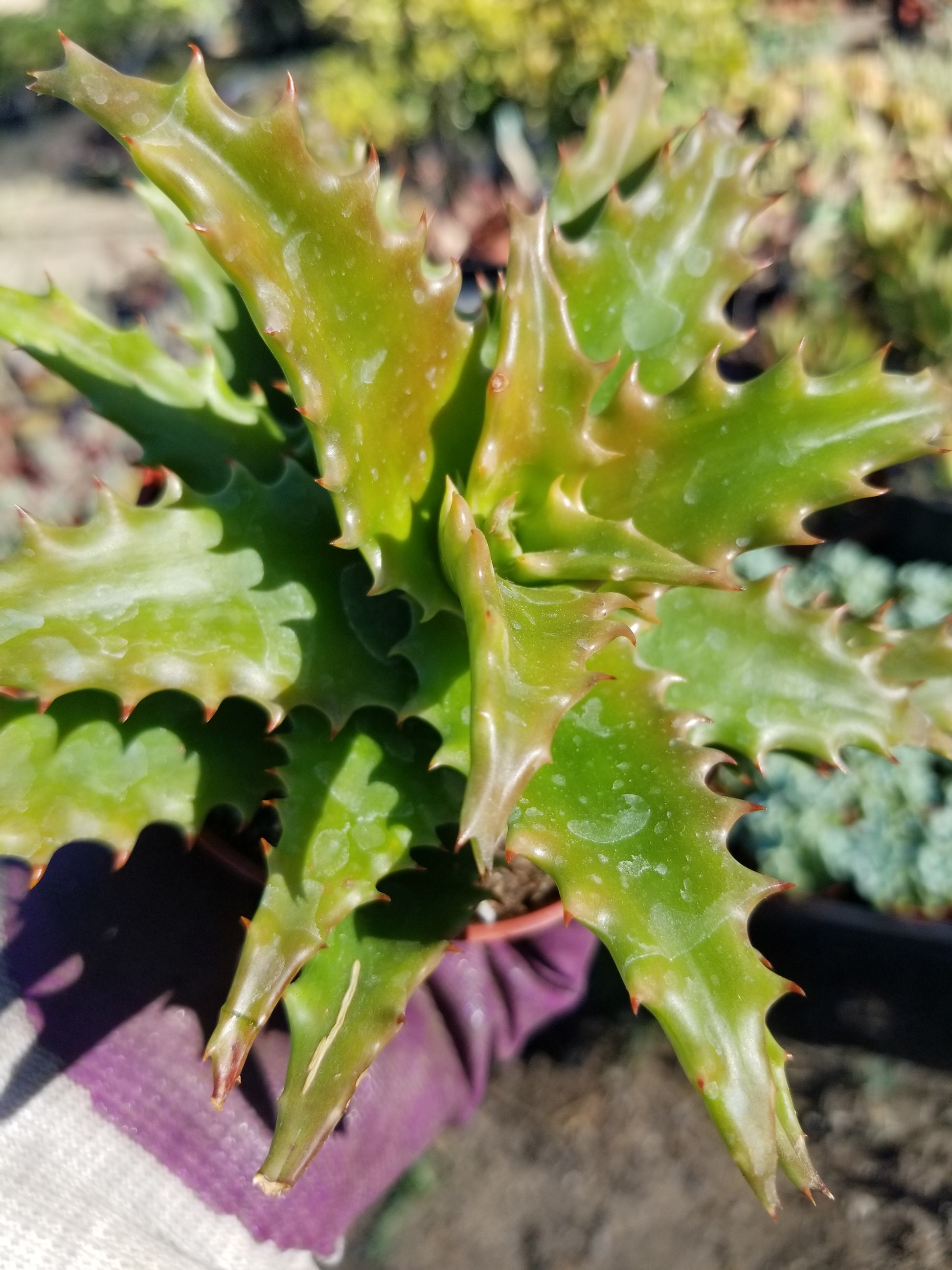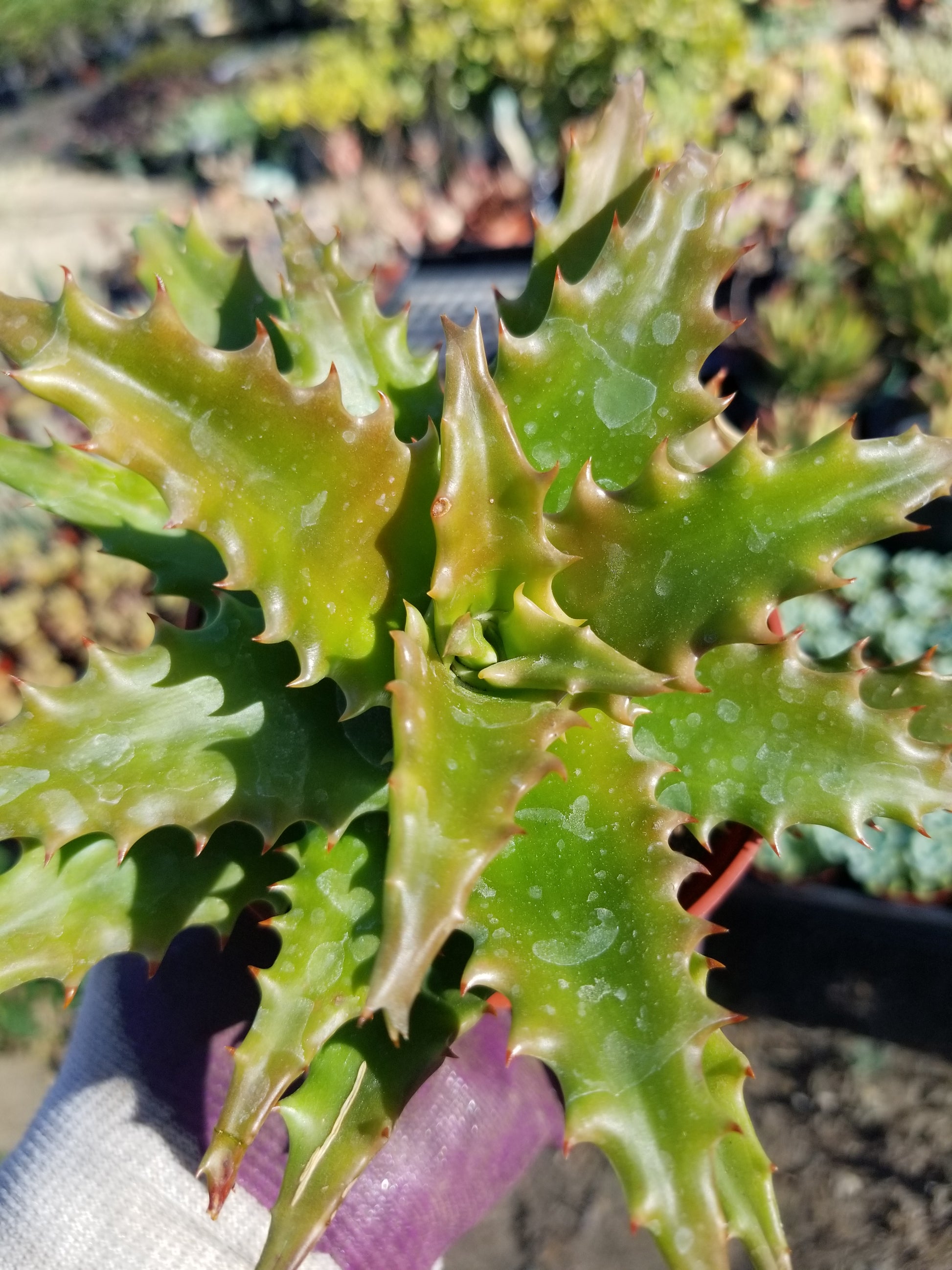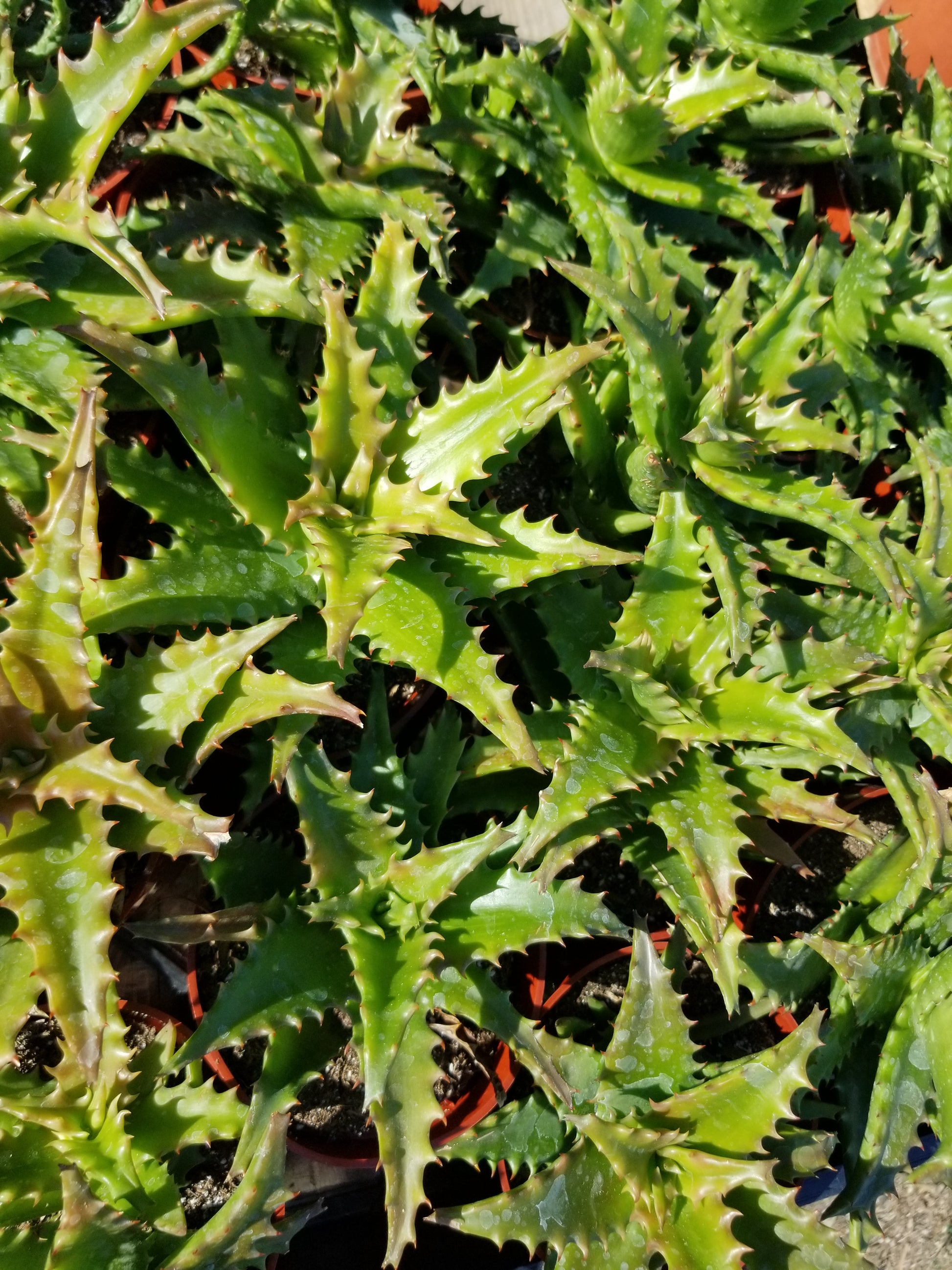Beaultiful Desert Plants
4" Aloe Congolensis
Couldn't load pickup availability
Aloe Congolensis
* Ship Bare root (without pot and soil) Pot size is only notated for your reference.
* If you are going plant your cactus or succulent in a pot, have it prepared beforehand with cactus mix soil (recommended), then water lightly.
*If you going to plant it into the ground, ensure proper drainage
*We Only ship Priority to ensure your Succulents plant will take between 2 to 3 days to arrive, we are not responsible for any the shipping carriers are delays.
* My Jades have really short roots, We reefed to the gallons that are planted in the add so you can see or estimate the actual size of the plant, do not expect to receive any Jade with long roots, That's why these trees are easy to Trim and give a shape as a bonsai tree and plant them in a shallow pot.
* We try to ship our succulent plants as soon as we get the order is customer responsibility to be aware of the plant arrival also customers will get a notification by email. If the customer wants to delay or change the day of the shipment please contact us as soon as possible.
*We take great care in the packaging of your plants, but unfortunately the same cannot always be said in how they are handled once they leave us
.*Is the customer responsibility to purchase a (Heat pack) if the Succulent plant is ship to a cold area, we usually recommended it if the whether is 35* or lower, If you are purchasing a large succulent plant please make sure you buy enough heat pack to cover the plant (1 heat pack every 12") We are not responsible for damages to the Succulent plant if is NOT enough coverage of the heat pack, and if is delay by USPS, the heat only will keep the box warm for 72 hours.
Category: Succulent
Family: Aloeaceae (now Asphodeloideae)
Origin: Congo (Brazzaville) (Africa)
Evergreen: Yes
Flower Color: Orange Red
Bloomtime: Fall/Winter
Synonyms: [Aloe dorotheae hybrid?]
Height: Prostrate
Width: 2-4 feet
Exposure: Sun or Shade
Summer Dry: Yes
Irrigation (H2O Info): Low Water Needs
Winter Hardiness: 25-30° F
Aloe congolensis (Congo Aloe) - A small clustering aloe to 6 to 8 inches tall with tight 5 inch wide rosettes on stems that lie along the ground to 2 feet long with short bright green shiny wedge-shaped leaves that have a slight recurved tip and sharp teeth - leaves take on a reddish-brown cast when drought or cold stressed. In late fall to early winter appear 1 foot tall unbranched inflorescence with reddish-orange flowers. Grows slowly and offsets to form a nice small dense groundcover and makes a nice potted specimen or even a hanging basket plant. Plant in full sun (best color) to light shade and irrigate occasionally. Hardy to 28 to 30 F. The name Aloe congolensis is not a verified species name but this plant has long been offered and passed around under this name which was first used by De Wildeman and T. Durand in 1899 but this name is often noted as “imperfectly known or doubtful” as Gilbert Reynolds does in “Aloes of Tropical Africa and Madagascar”. The entry for this plant in this book notes that the plants first described came from sandy bush near Kimuenza in the Congo and that it may be conspecific with Aloe buettneri, though images of this plant look much different and Aloe buettneri is described as having wider leaves and a bulb-like swelling not apparent in the plants known as Aloe congolensis. This name also does not appear in Aloes: The Definite Guide published in 2011. Our plants came from the UCSB Biology Greenhouse collection. This plant was particularly prone to aloe mite damage and we discontinued production of it. The information presented on this page is based on research that we have conducted about this plant in our library and from reliable online sources. We also consider observations we have made of it growing in the nursery's garden and in other gardens we have visited, as well how it performs in our nursery crops out in the field. We will incorporate comments that we receive from others as well and welcome getting feedback from anyone who may have additional information, particularly if they have knowledge of cultural information that would aid others in growing Aloe congolensis.
Share

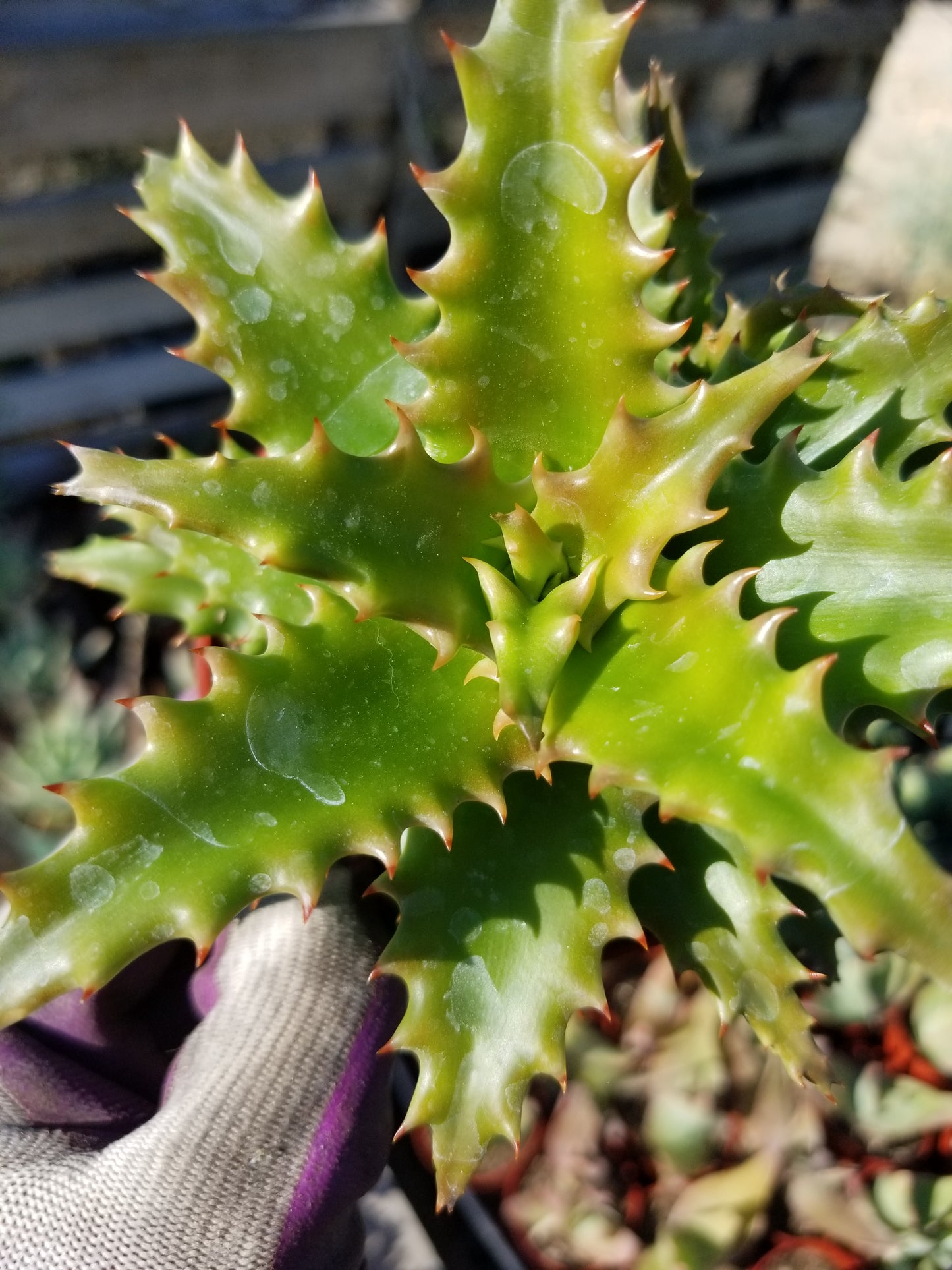
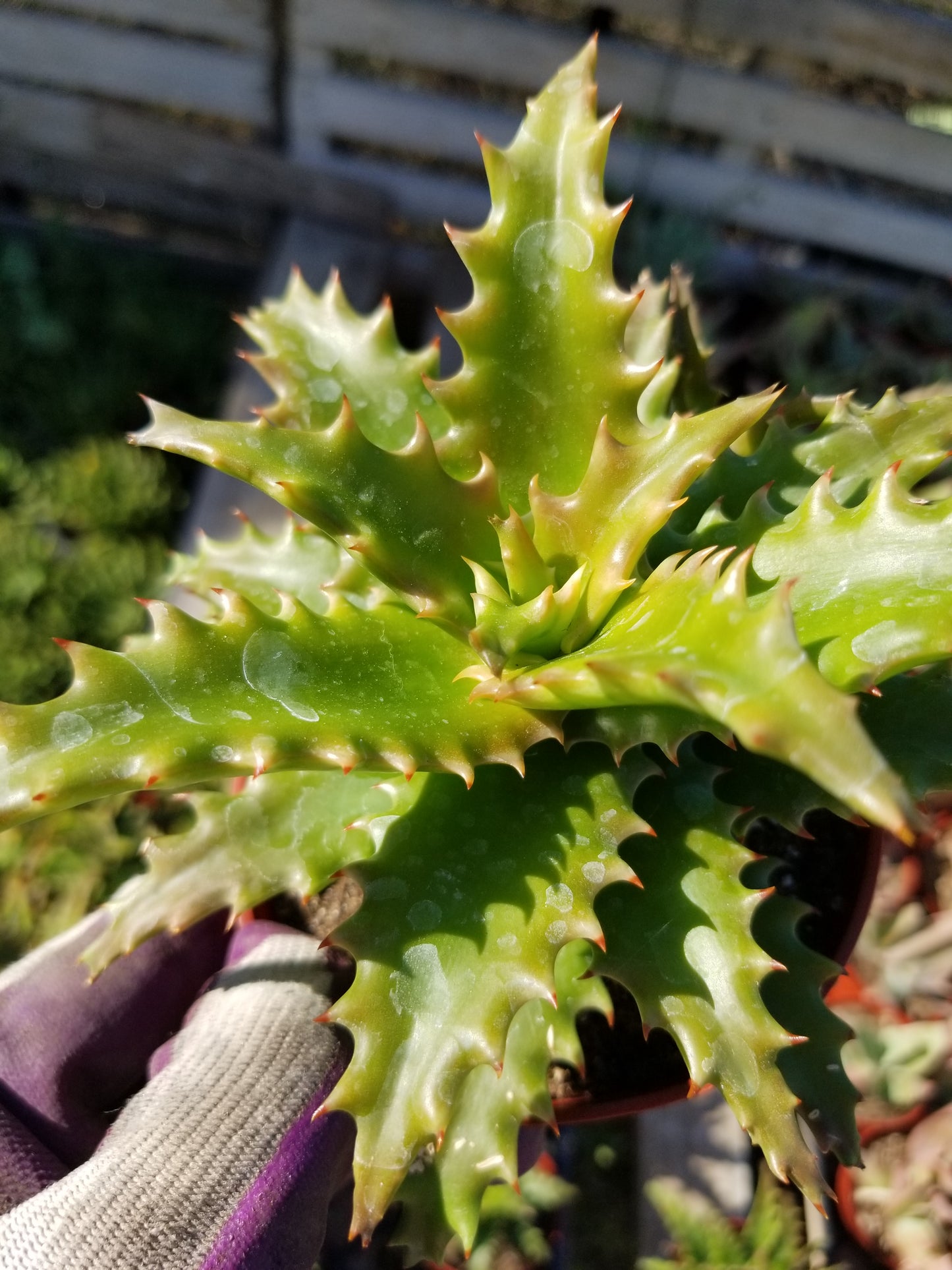
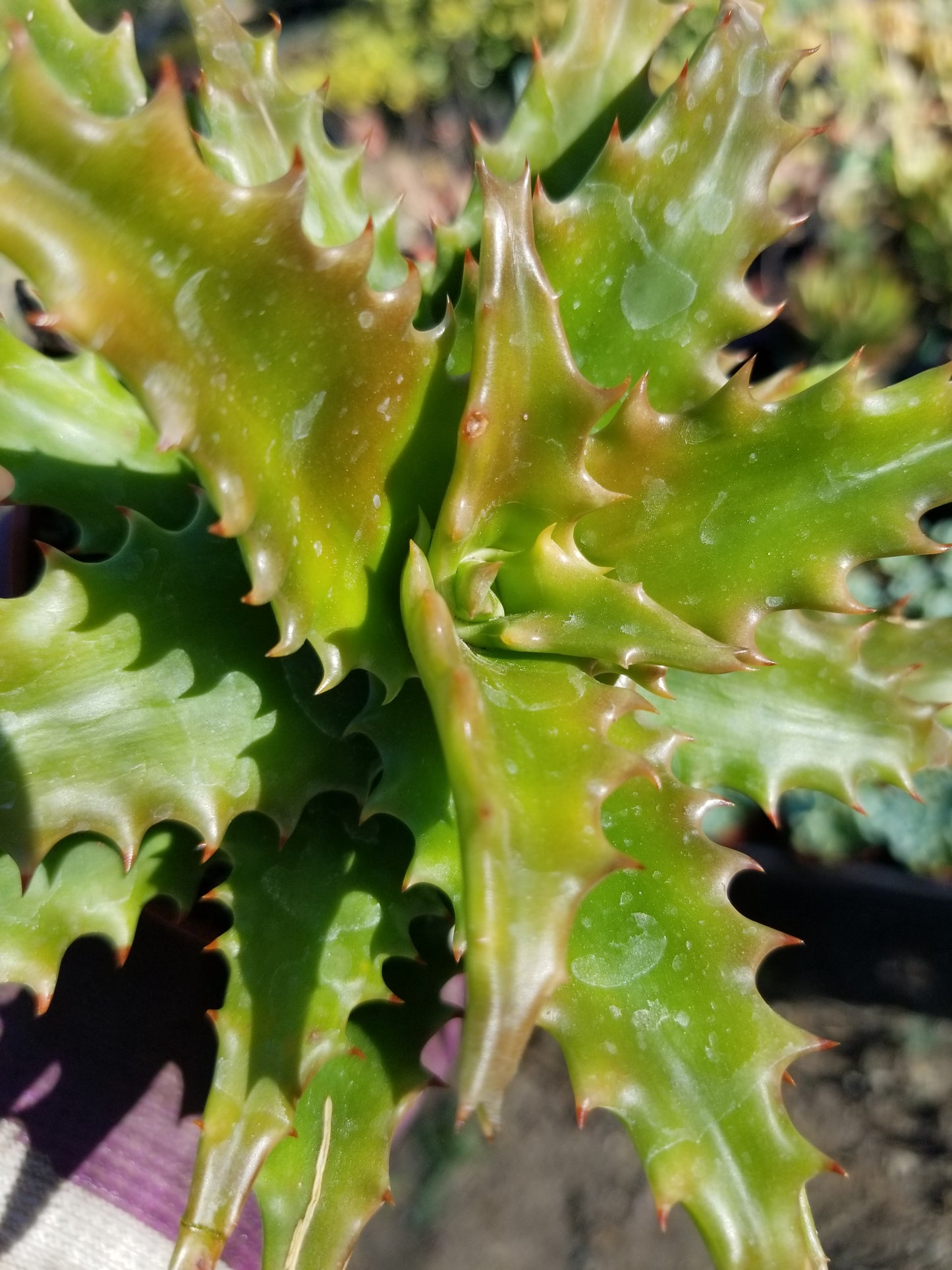



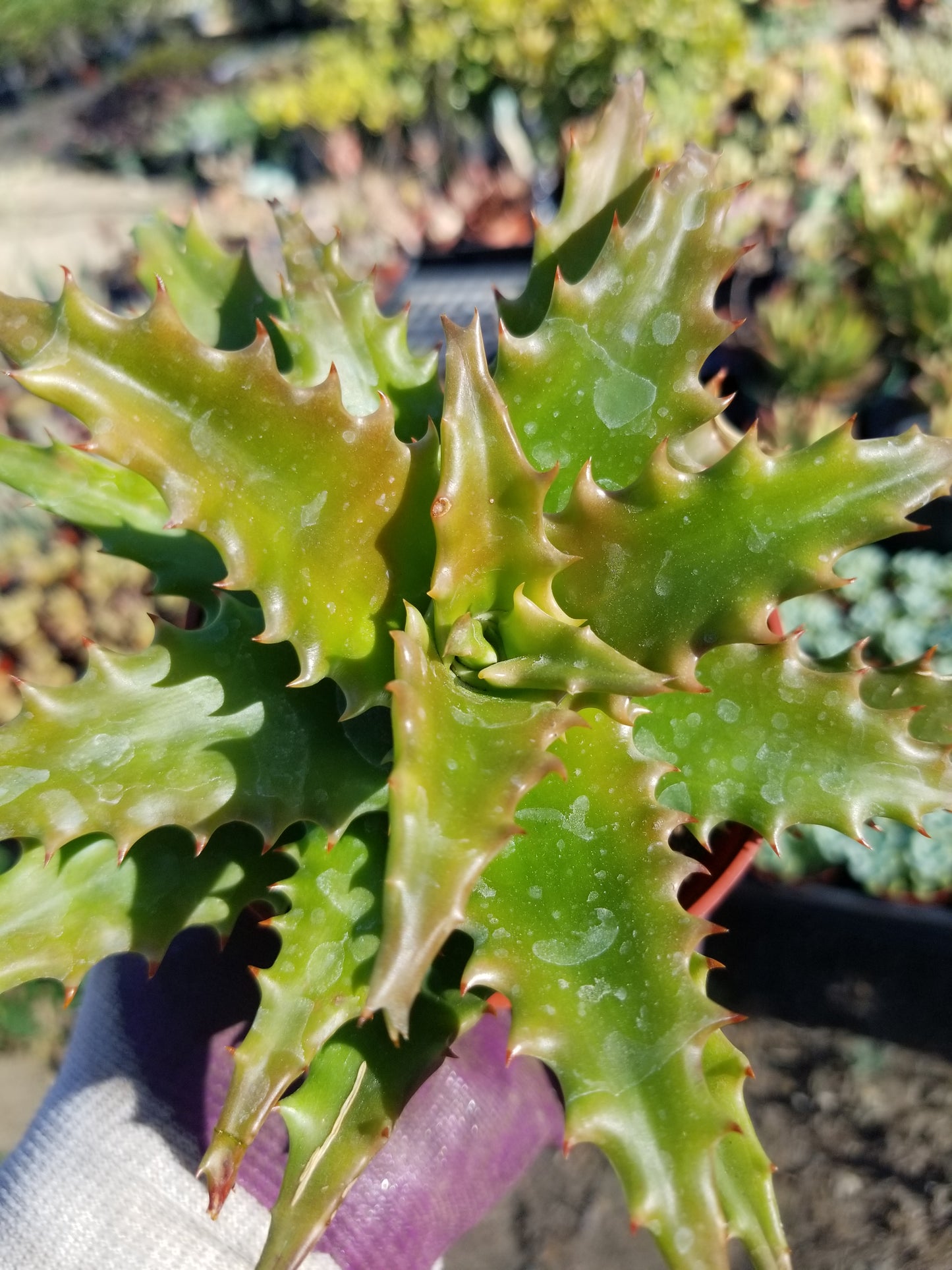
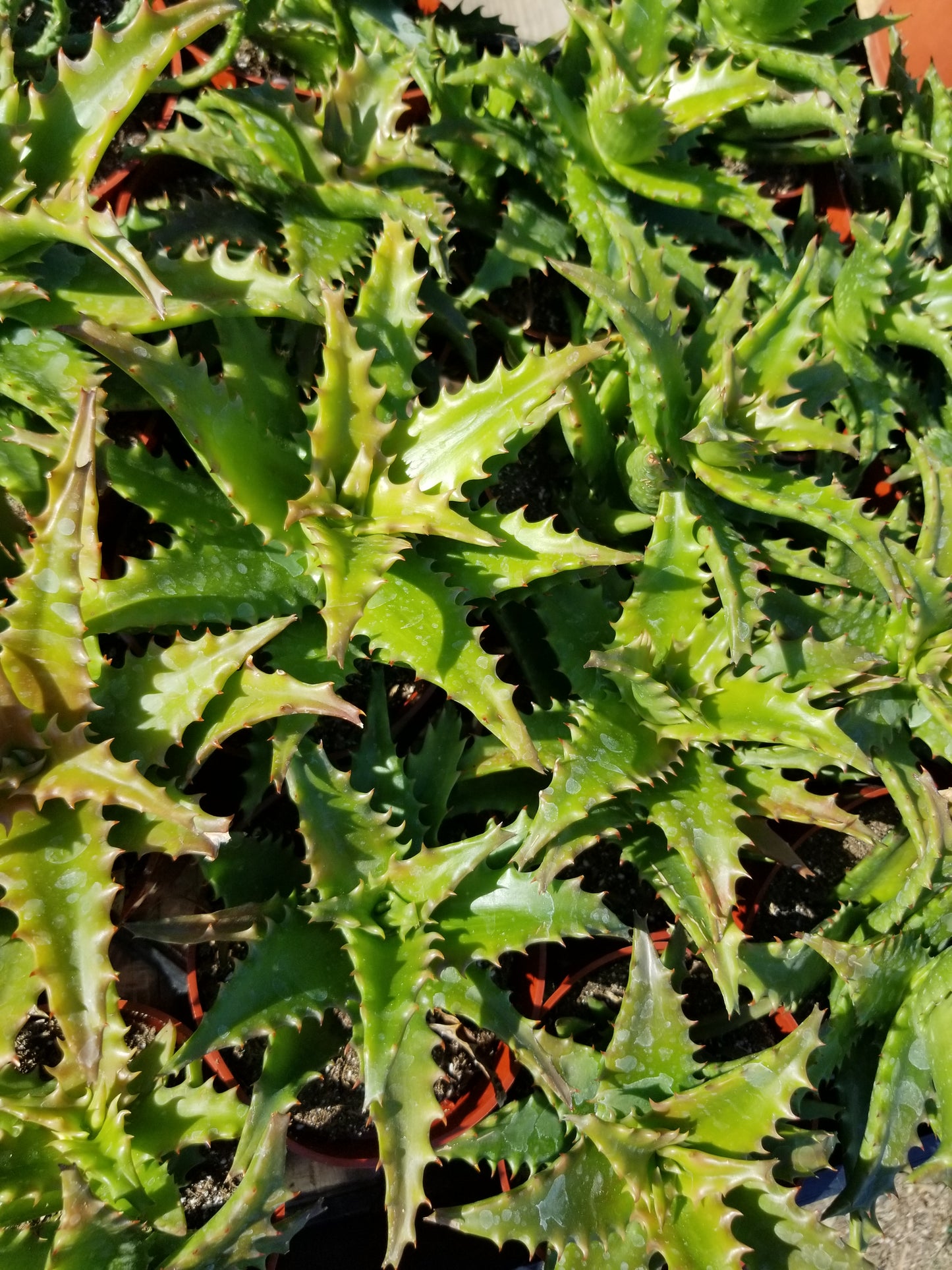
Great aloe. Healthy and arrived in great shape.
Subscribe to our emails
Be the first to know about new collections and exclusive offers.

